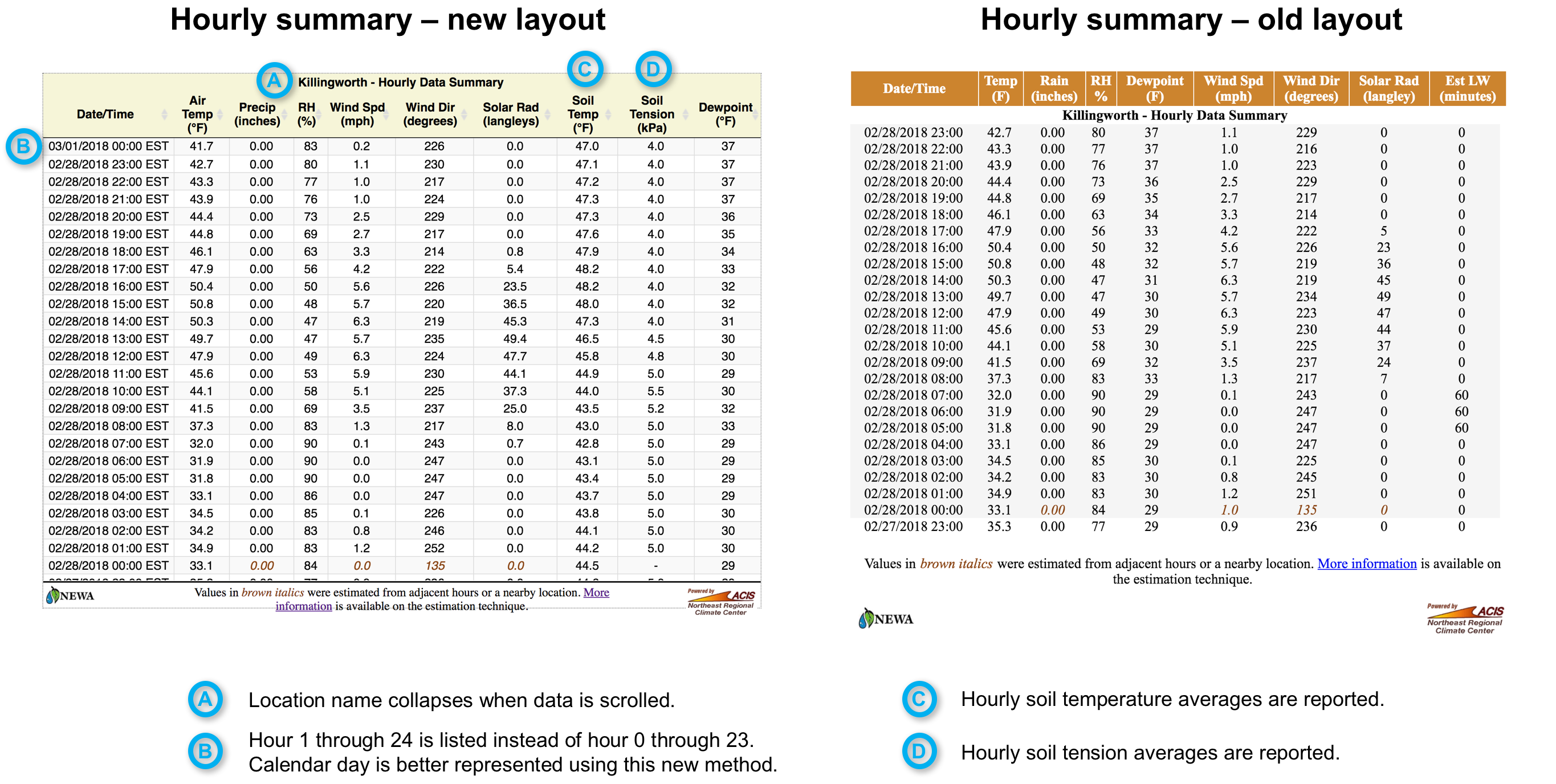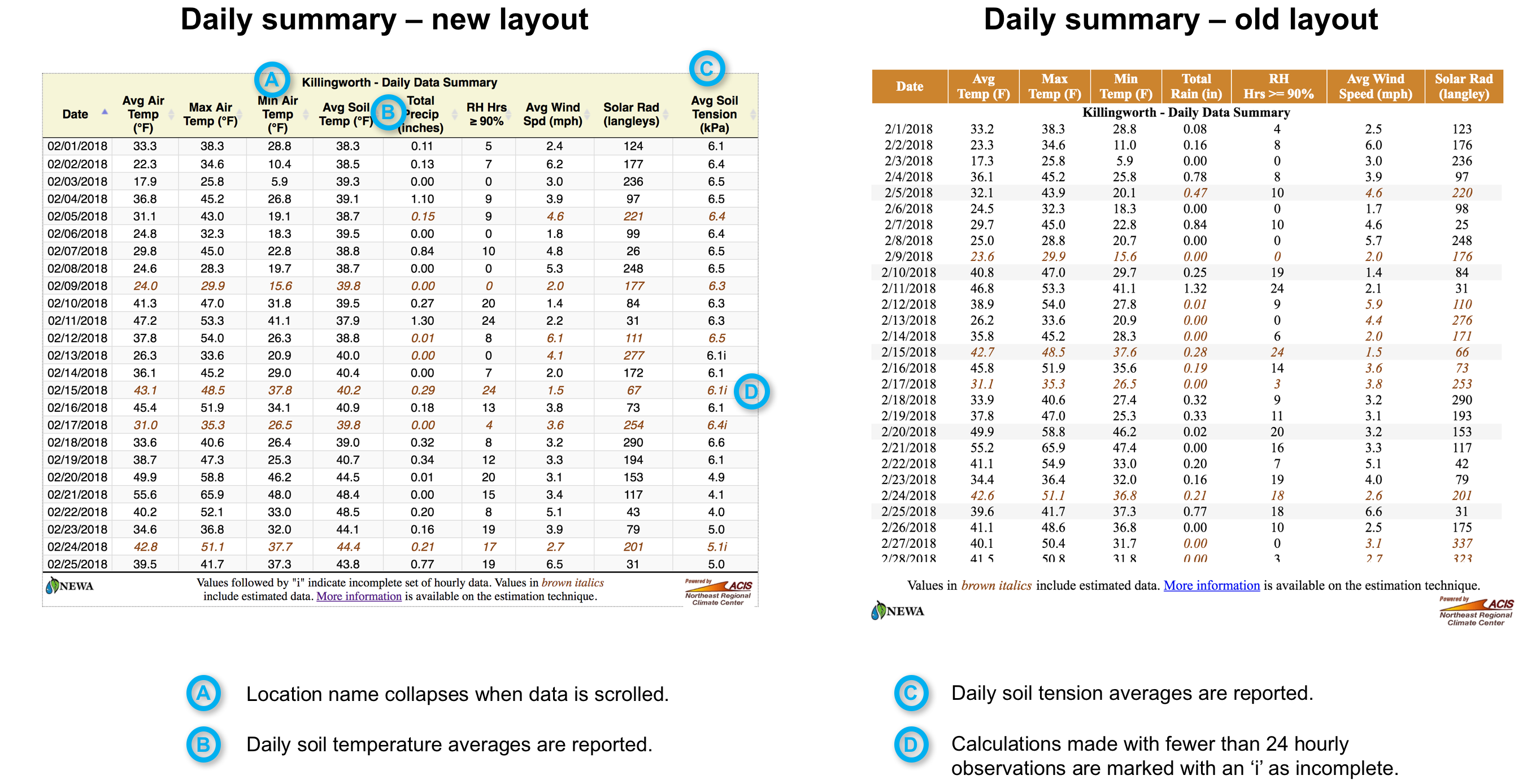Weather station owners who link with NEWA can testify to the usefulness of local real-time management information. Read this article to learn more about the process of linking a privately-owned weather station to NEWA.
Talk to your NEWA state coordinator
Contact your NEWA state coordinator before making any station purchase decision. NEWA partners with member states throughout the eastern and central United States to provide local grower support and expertise. Your coordinator can provide information specific to your state, answer questions about the NEWA platform, direct commodity questions to appropriate extension or university resources, and identify possible training opportunities for you.
View a list of NEWA state coordinators
Research your weather station options
NEWA models and tools require a specific configuration of weather station sensors to work. Understand all aspects of purchasing and maintaining a weather station before making the investment by reading our station buying guide and talking to our weather station vendor, Rainwise, Inc. Your NEWA state coordinator also has a lot of experience managing and maintaining his or her own machines, helping other growers in your state, and working with NEWA.
View the NEWA weather station buying guide
Weather stations are similar to any other investment on your farm. Tractors and combines require scheduled maintenance and checks throughout the season, and a long-term plan for capitalization. The same is true with a professional weather station. Understand upfront costs, maintenance, and calibration needs, as well as warranty coverage.
Talk to your NEWA state coordinator before making a purchase. Read the NEWA station buying guide. Talk to other growers you know who also have weather station linked to NEWA.
Purchase a weather station
When you are ready to purchase a station, contact Rainwise, Inc., the weather station vendor for NEWA. Review the NEWA station buying guide and understand specifications, add-ons, warranty coverage, maintenance requirements, and lifespan. Rainwise, Inc. is a weather station vendor that provides hardware and an online software platform (rainwise.net) to growers, from which NEWA gathers weather information to be used at newa.cornell.edu.
A note about NEWA and Rainwise, Inc.
You become a customer of Rainwise, Inc. after purchasing a weather station. NEWA is not affiliated with Rainwise, Inc., and does not receive monetary compensation or commission for weather stations purchased with the intent for use with NEWA.
The NEWA platform (newa.cornell.edu) is part of the New York State IPM Program at Cornell University. Rainwise, Inc. is a vendor of weather stations that are compatible with the NEWA. Questions about models and resources hosted at newa.cornell.edu should be directed to your NEWA state coordinator. If your state does not have a listed coordinator, reach out to NEWA staff directly at newa@cornell.edu.
Installation
Your weather station is sitting in a big box in your farm office. What now? Follow the advice of your NEWA state coordinator and Rainwise, Inc. regarding station installation and linking with rainwise.net. The process may vary slightly depending on the topography and layout of your farm.
Configuration
Several verification steps must be completed before NEWA can create a location at newa.cornell.edu using data from your rainwise.net weather station account. Finish these tasks before making a request to join newa.cornell.edu.
Verify your rainwise.net account settings
Talk to your NEWA state coordinator…again!
At this point, talk to your NEWA state coordinator again. He or she will need information about your location, station hardware, contact information, and confirmation that settings have been checked in rainwise.net, which operates independently of the NEWA platform at newa.cornell.edu.
Welcome to NEWA
If you follow the steps described above, communicate with your NEWA state coordinator, confirm weather station settings on rainwise.net, and provide needed station information, no further action is required. It takes three to five business days to link data coming from your account at rainwise.net to newa.cornell.edu and to verify that information is accurate.

